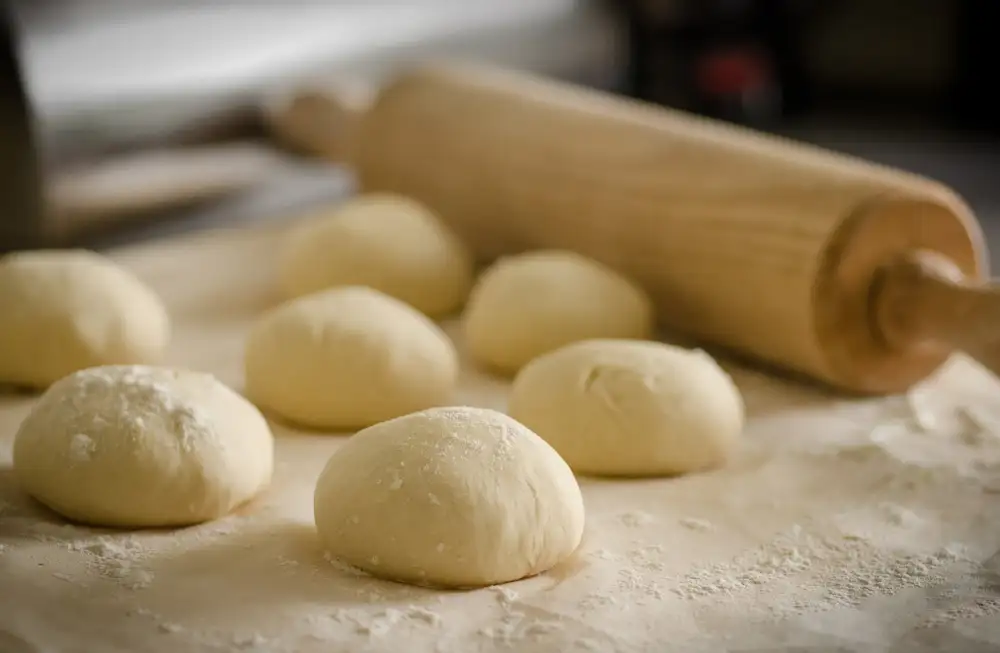Mastering the Magic of Self-Rising Flour: Elevate Your Baking with this Leavening Agent

- The composition of self-rising flour: Key ingredients and their roles
- Benefits of using self-rising flour in baking: Convenience and time-saving
- Tips for substituting self-rising flour in recipes: Adjustments and considerations
- Common misconceptions about self-rising flour: Debunking myths
- Exploring the versatility of self-rising flour: Beyond traditional baking
- How to store self-rising flour for optimal freshness: Best practices
Self-rising flour is a versatile ingredient that can elevate your baking to new heights. It is a pre-mixed blend of all-purpose flour, baking powder, and salt, making it a convenient option for home bakers. The magic lies in its leavening properties, which eliminates the need for additional rising agents in recipes. With self-rising flour, you can achieve light and fluffy baked goods with minimal effort. Whether you're a novice or an experienced baker, understanding the basics of self-rising flour will unlock a world of culinary possibilities.
The composition of self-rising flour: Key ingredients and their roles
Self-rising flour is a versatile ingredient that contains three key components: all-purpose flour, baking powder, and salt. The all-purpose flour provides structure and texture to baked goods. Baking powder acts as the leavening agent, creating air bubbles that make the dough rise. Lastly, salt enhances the flavor of the final product. The combination of these ingredients in self-rising flour eliminates the need for measuring and mixing them separately, making it a convenient option for quick and easy baking.
Benefits of using self-rising flour in baking: Convenience and time-saving
Using self-rising flour in baking offers numerous benefits, primarily convenience and time-saving. This specialized flour already contains the necessary leavening agents, such as baking powder and salt, eliminating the need to measure and mix them separately. This saves you valuable prep time and ensures consistent results every time. Whether you're making biscuits, pancakes, or cakes, self-rising flour simplifies the baking process without compromising on taste or texture. So why not embrace this convenient option and elevate your baking experience today?
Tips for substituting self-rising flour in recipes: Adjustments and considerations
When substituting self-rising flour in recipes, it's important to make the necessary adjustments and considerations. If a recipe calls for all-purpose flour, you can replace it with self-rising flour by reducing or eliminating the leavening agents like baking powder or baking soda. For every cup of all-purpose flour, use 1 and 1/2 teaspoons of baking powder and 1/4 teaspoon of salt. However, keep in mind that self-rising flour may affect the texture and rise of your baked goods. It's also crucial to note that self-rising flour is not suitable for recipes that require yeast as a leavening agent. Always experiment and adjust accordingly to achieve the desired results when substituting self-rising flour in your favorite recipes.
Common misconceptions about self-rising flour: Debunking myths
Common misconceptions about self-rising flour often lead to confusion in the kitchen. One common myth is that self-rising flour cannot be used in recipes that call for all-purpose flour. This is not true! While it may require some adjustments, self-rising flour can be substituted for all-purpose flour by reducing or eliminating the leavening agents and salt in the recipe.
Another misconception is that self-rising flour is only suitable for sweet baked goods. In reality, it can be used in a variety of savory dishes as well, such as biscuits, scones, and even fried chicken. The leavening agents in self-rising flour help create a light and fluffy texture, making it a versatile option for both sweet and savory recipes.
Lastly, some believe that self-rising flour has a shorter shelf life compared to other flours. However, if stored properly in an airtight container in a cool and dry place, self-rising flour can last up to six months without losing its effectiveness. It's important to check the expiration date on the package and discard any expired flour.
By debunking these myths, we can fully embrace the convenience and versatility of self-rising flour in our baking endeavors.
Exploring the versatility of self-rising flour: Beyond traditional baking
Self-rising flour is not limited to traditional baking recipes. Its versatility extends to a wide range of culinary creations. From fluffy pancakes and tender biscuits to crispy fried chicken and savory dumplings, self-rising flour can be used in various dishes. It adds a lightness and leavening effect that enhances the texture and taste of these foods. Don't be afraid to experiment with self-rising flour in your favorite recipes and discover new ways to elevate your cooking skills.
How to store self-rising flour for optimal freshness: Best practices
To ensure the optimal freshness and longevity of self-rising flour, proper storage is essential. Start by transferring the flour into an airtight container or resealable bag to protect it from moisture and pests. Store it in a cool, dry place away from direct sunlight, as exposure to heat and light can degrade its quality. Remember to label the container with the date of purchase to keep track of its freshness. Check for any signs of spoilage, such as off odors or discoloration, before using the flour in your baking recipes. By following these best practices, you can extend the shelf life of your self-rising flour and continue to enjoy its convenience and versatility in your culinary adventures.
In conclusion, self-rising flour is a valuable ingredient that can elevate your baking experience. Its convenience and time-saving qualities make it a must-have in any kitchen. By understanding its composition and benefits, you can confidently substitute it in recipes and debunk common misconceptions. Moreover, don't limit yourself to traditional baking - explore the versatility of self-rising flour in various dishes. Remember to store it properly for optimal freshness. Embrace the magic of self-rising flour and take your culinary creations to new heights!
Published: 18. 11. 2023
Category: Food



